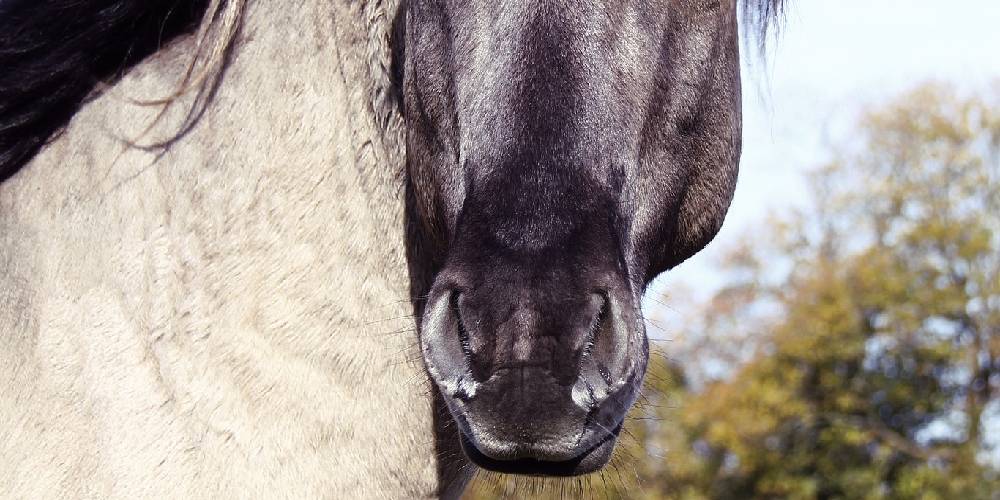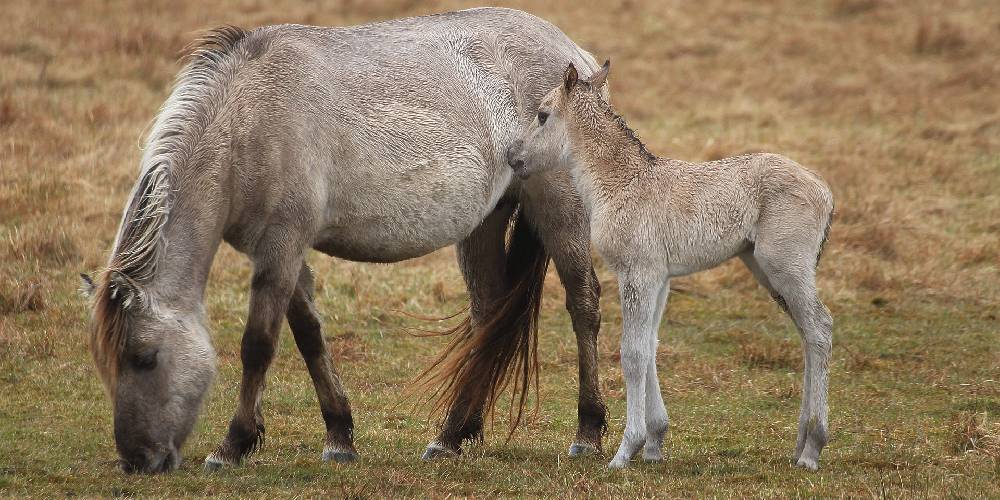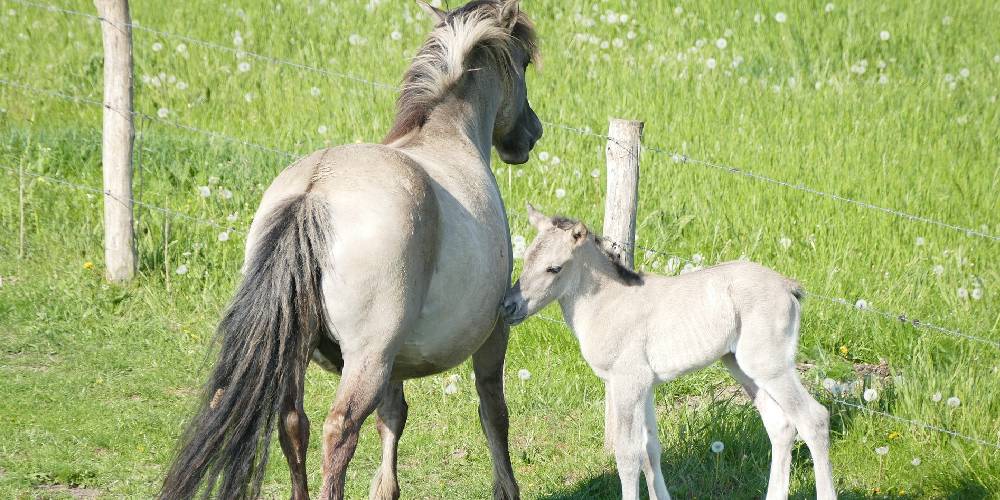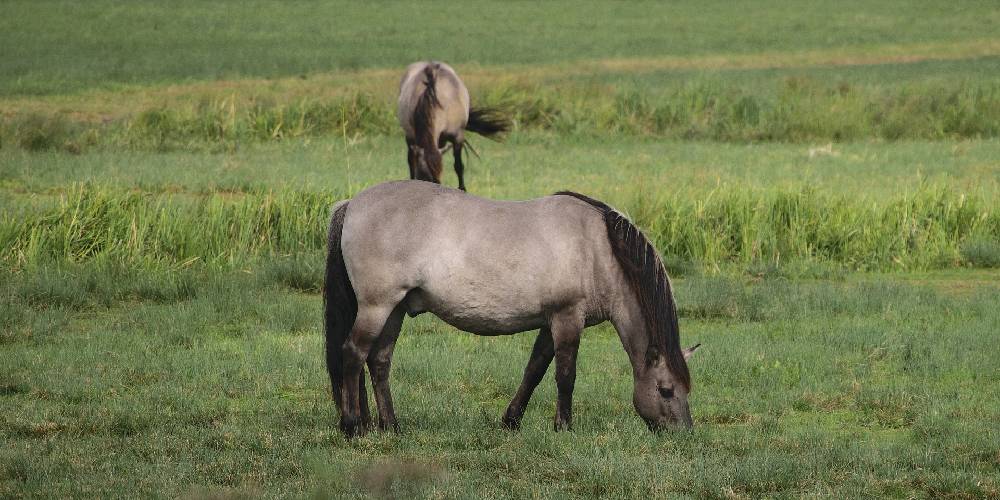Grullo is a really beautiful and unique coat color seen in a variety of breeds and types of horses all around the world. Grullo is actually thought to be a form of dun coloring and is classified as one of the shades of dun. This beautiful color is really rare and isn’t often seen in many horses outside of the breeds that can only come in this color.
What Is Grullo?
Grullo is a horse coat color that is relatively rare to see. Mainly seen in certain types of wild horses, grullo is a unique coat color comparable to that of the coat color known as dun. These horses have a sandy-gray coat color with dark legs, a dark nose, a dark mane and tail, and a dorsal stripe. The two most common breeds to have this coloration are the wild breeds known as the Konik and the Tarpan.
How Can I Tell The Difference Between Red/Classic Dun & Grullo?

There are several ways to tell the difference between dun and grullo. The main traits that can tell them apart are:
Coat Color
The main difference between the classic or red shades of dun and grullo horses are the colors of the coats themselves. Dun horses have a yellow-orange tinge to their coats while grullo horses have a dusty sandy-gray color to them. Grullo horses will appear more silver while dun horses look more gold.
Mane & Tail
Dun horses have a mane and tail with a more consistent color. Duns have black manes and tails while grullo horses have black mixed with gray highlights.
Face
Dun horses may have some black on their muzzle and ears, but grullo horses have a lot of it. These horses will often have dark hairs on their nostrils, up to their muzzle, to their face, and on their ears.
What Makes A Horse Grullo?
A horse is considered grullo based entirely on its color and not its breed. A grullo horse has a sandy-gray coat, a dark mane and tail (light streaks and highlights are acceptable), a dorsal stripe, a dark face or muzzle, dark legs, dark ears, and some zebra striping on the legs. Unlike buckskin, a similar horse color, the grullo horse color has no creme gene to affect its coloring.
Where Did This Color Originate?

Like the dun color, grullo is an ancient coat color seen mainly in horses more closely descended from and related to ancient horse types and breeds. The Tarpan, for example, is a close relative of prehistoric horses and shows off a grullo coat.
It is even thought that this coat color is the same as those of prehistoric horses before other coat colors began to appear.
This coat color was first seen on horses in Central Asia.
Can Grullo Horses Have White Markings?
Yes! Absolutely these horses can have white markings. These horses can ahave any white makring including:
- Stars
- Stripes
- Snips
- Interrupted Stripes
- Blazes
- Socks (includes coronet, half pastern, fetlock, half-cannon, and cannon markings)
- Stockings (includes any over-the-knee markings)
Are Grullo Horses Rare?
Yes, these horses are one of the rarest horse colors seen in the horse world. Being most common in wild horses, the horses that carry this color are rare themselves. Even more popular breeds like the Quarter horse are seldom seen as grullo.
Breeds That Can Be Grullo

There are a number of breeds that can be grullo. These are the:
- Mustang
- Quarter Horse
- Konik Pony
- Tarpan
- Sorraia
- Spanish Jennet Horse
- Kazakh Horse
- Gotland Pony
- Appaloosa
- Missouri fox Trotter
- Criollo
- Florida Cracker Horse
- Kentucky Mountain Saddle Horse
- Azteca
- Swiss Warmblood
- Tennessee Walking Horse
- Irish Draught
- Curly Horse
Though this color can be seen in all these breeds, not all of them show this coloration often making it rare even among the horse breeds that can be this color.
Horse Breeds That Can’t Be Grullo
There are a number of horse brerdss that can’t be rullo. These are:
- Thoroughbreds
- Arabians
- Haflingers
- Fjords
- Belgians
- Clydesdales
- Cleveland Bays
Does The Grullo Color Have Multiple Names?
Yes, this horse coat color can actually be called a lot of other names besides grullo. The names this color can be called include:
- Grullo
- Grulla
- Blue Dun
- Gray Dun
- Mouse Dun
Fun Facts On Grullos

- This coat color carries the zebra striping of its ancestors that was passed down through the generations
- Grullo foals are born a light creme color and look almost dun or buckskin when they are born. Their coat color darkens over time.
- Grullos are really often confused with blue roans because of the coloring of their coat. These horses are different as they are not born black, their color doesn’t lighten over time, and there is no white ticking across their whole coat.
- Grullo horses are black horses with a dun gene.
FAQs On This Coat Color.
How do you pronounce Grullo or Grulla?
I have heard this color pronounced so many different ways so I wanted to know how to say it correctly.
The word Grullo is pronounced: Groo-low
The word Grulla is pronounced: Gruh-luh
Are Grullo horses classified as a color or a breed.
These horses are NOT a breed. Grullo is strictly a color and not classified as a breed as many other horses have the same coloration, there is not set conformation, and no set type of horse that these horses need to be.
Can grullo horses be pinto?
Yes! and pinto grullos are absolutely gorgeous. These horses have the base color of grullo with the white splotches, patches, and markings of a pinto. These horses are stunning and very unique. To see a pinto grullo is a really rare sight.
Is there such thing as a grullo roan?
I have heard mixed answers from a number of sources on whether a not a grullo could be a roan. Based on what I have learned from my research, in order to have a grulla roan, a horse must have a black base color, a dun gene, and a roan gene. It is from this that the Grulla roan color is achieved.

